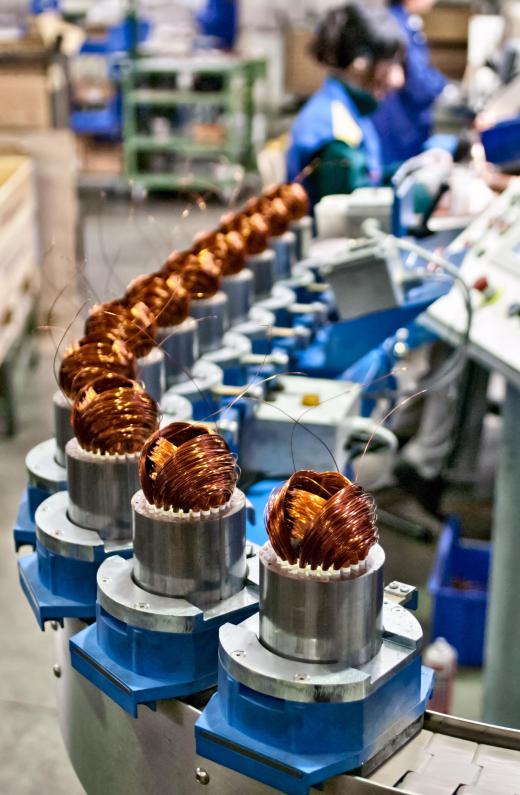A rotating conveyor is a device used to automatically flip, rotate, or invert products as they travel along a conveyor belt. These machines are generally found in factories or manufacturing facilities, where they are part of an assembly line system. Different types of rotating conveyors flip products along a horizontal axis so that other machines or workers can easily access the bottom of the object. Others simply rotate the orientation of the product along a vertical axis. A rotating conveyor can be designed to flip products 180 degrees, or to turn them a full 360 degrees as needed.
The most common type of rotating conveyor is a single rollover station, which flips a product upside down as it travels through on the belt. As the belt enters the rollover station, the product is completely encased by the rotating conveyor mechanism, which surround the product on top, bottom, and both sides. A separate cylinder within the station rotates with the product inside, then stops rotating when the object has been flipped upside down. The product can then continue to travel along the belt to other stations along the assembly line.

To understand the benefits of a rotating conveyor, consider a standard DVD player. As it moves along a conveyor belt, workers and machines need to access both the top and bottom of the player to add various components and covers. Rather than manually picking the each unit up and turning it over, a rotating conveyor flips the unit to provide the necessary access. In this type of scenario, multiple rotating units can be used to flip the products from one side to the other at various points along the belt.

Another type of rotating conveyor simply lifts the object so that it is parallel to the surface of the belt, then rotates it along a vertical axis before placing it back down on the belt. These units are known as "lift-and-rotate" conveyors, and are used to change the orientation of the product during various stages of assembly. For example, in a bottling plant, these machines could be used to rotate a case of bottles as it passes under a filling station so that all bottles can be filled without human intervention. These machines are also useful for orienting objects to face one side of the belt or the other to line up with machinery, or to maximize efficiency from human laborers.
